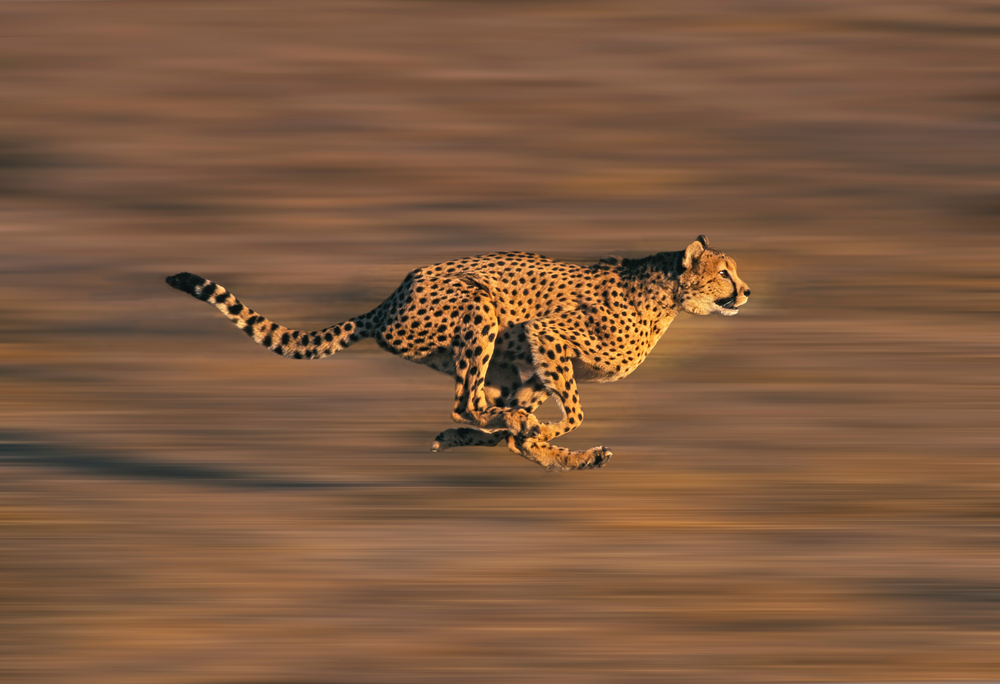What makes a cheetah so fleet? According to one group of biomechanics and engineers, size matters. But not the way you think.
Dr. David Labonte of Imperial College London’s Department of Bioengineering led a study into what makes fast-running animals fast. There’s a relatively narrow performance window, the team found, where speed and size coincide.
“The fastest animals are neither large elephants nor tiny ants, but intermediately sized, like cheetahs,” Labonte told SciTechDaily. “Why does running speed break with the regular patterns that govern most other aspects of animal anatomy and performance?”
These governing patterns of performance include, for instance, jumping ability. Bulky pachyderms like rhinos and elephants can’t do it at all. But Kangaroo rats can jump 45 times their own body length; fleas 220. In this case, size and comparative jump distance create a largely linear graph.
So why is there a sweet spot for running speed? The answer relates to two factors familiar to many athletes: kinetic ability and work capacity.
Muscles are “the ubiquitous animal motor,” as the study, published in Nature Communications, puts it. The smaller the animal, the more effect a muscle contraction can produce. But in larger animals, there’s more weightlifting involved too. Muscle cells have to contract across longer distances, limiting what a single contraction can do.
“For large animals like rhinos or elephants, running might feel like lifting an enormous weight, because their muscles are relatively weaker, and gravity demands a larger cost,” explained co-author Dr. Peter Bishop of Harvard University. “As a result of both, animals eventually have to slow down as they get bigger.”
The cheetah’s 100+ kph top speed clocks in slightly higher than that of pronghorns and Dorcas gazelles. Of these, the gazelle is the lightest at around 14 kilograms; a cheetah weighs 34-64 kg, a pronghorn 40-65 kg.
View this post on Instagram
The team tested its theory on over 400 species from insects and arachnids to birds, lizards, and larger mammals.
Implications range from understanding why animals are different sizes to how dinosaurs could move at all. Because gravity is one constraint, the team calculated it would be impossible for a land animal 40 tons or heavier to move on Earth.
African elephants weigh 6.6 tons — but some dinosaurs, like the massive Patagotitan, could have weighed over 40 tons. Perhaps, suggested the researchers, these extinct creatures had unusual anatomies that allowed them to move, albeit slowly, with such a mass.
View this post on Instagram
But before delving into prehistoric land animal biology, the team first plans to train its sights on flying and swimming animals.
“Our study raises lots of interesting questions about the muscle physiology of both extinct animals and those that are alive today, including human athletes. Physical constraints affect swimming and flying animals as much as running animals — and unlocking these limits is next on our agenda,” said Labonte.






